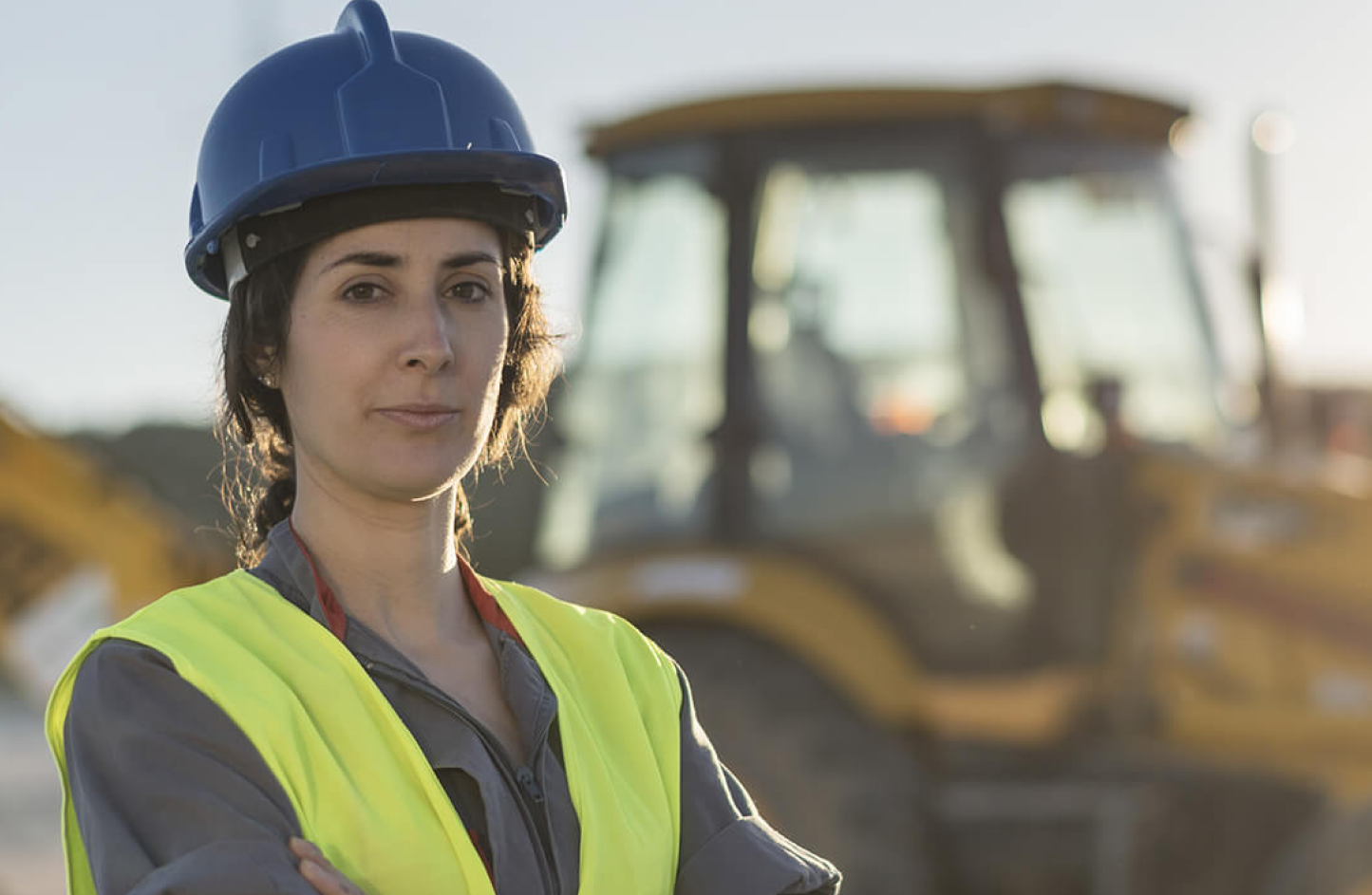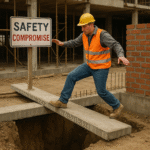|
Getting your Trinity Audio player ready...
|
The construction industry is known for its physically demanding work and high-risk environments. Unfortunately, this can take a toll on the health and well-being of construction workers in Australia. However, there is a growing recognition of the importance of prioritizing wellness in this industry. Building a healthier future in Australian construction is not only beneficial for the workers themselves but also for the overall productivity and success of construction projects. In this blog post, we will explore various strategies and initiatives aimed at improving wellness in the construction industry. From promoting physical fitness and mental health support to implementing safety measures and fostering a positive work culture, discover how we can create a healthier and more sustainable future for construction workers in Australia.
The state of health programs in construction and the suicide rates among construction workers
In recent years, there has been a growing recognition of the importance of prioritizing wellness and mental health in the construction industry. Construction workers face unique challenges that can impact their overall well-being, and it is crucial that we address these issues head-on.
Unfortunately, the state of health programs in construction has long been lacking. Many companies have not prioritized the implementation of comprehensive wellness initiatives, leaving workers without the necessary support they need. This has resulted in alarmingly high suicide rates among construction workers, which is a heartbreaking reality that cannot be ignored.
The demanding nature of the industry, with its long hours, high-pressure environments, and physically demanding tasks, can take a toll on workers’ mental health. The lack of access to mental health resources and support exacerbates this issue even further. It is essential that we break the silence surrounding mental health in construction and work towards a healthier future for all workers.
Thankfully, there are initiatives and organizations dedicated to addressing this issue and improving the state of health programs in construction. These programs aim to raise awareness, provide resources, and offer support to workers in need. It is crucial for companies to invest in these initiatives and prioritize the well-being of their employees.
Furthermore, conversations about mental health and suicide prevention need to be normalized within the construction industry. Breaking the stigma surrounding mental health will encourage workers to seek help when they need it and create a more supportive and understanding work environment.
Building a healthier future in Australian construction requires a collective effort from employers, industry associations, and individual workers. By implementing comprehensive health programs, providing access to mental health resources, and fostering open dialogue, we can greatly improve wellness in the industry and reduce the devastating rates of suicide among construction workers. It is time to prioritize the well-being of those who build our cities and create a safer, healthier future for all.
The importance of prioritizing wellness in the construction industry
In construction, the focus is often on completing projects on time and within budget. However, amidst the hustle and bustle, it is crucial to prioritize the wellness of the workers in the industry. The physical demands of construction work, coupled with long hours and high stress levels, can take a toll on the well-being of the workforce.
The construction industry in Australia is no exception. With the sector contributing significantly to the country’s economy, it is imperative to address the health and wellness concerns faced by construction workers. By prioritizing wellness, construction companies can create a safer and more sustainable future for their employees.
One of the primary reasons why prioritizing wellness is crucial in the construction industry is the high rate of occupational injuries and illnesses. The physically demanding nature of the work, coupled with the use of heavy machinery and hazardous materials, puts workers at risk of accidents and injuries. By investing in safety measures, providing proper training, and promoting a culture of well-being, construction companies can significantly reduce these risks and create a safer working environment.
Moreover, the construction industry often faces high levels of stress due to tight deadlines, complex projects, and demanding clients. This can lead to mental health issues such as anxiety and depression among workers. By implementing wellness programs that focus on mental health support, stress management, and work-life balance, construction companies can create a more positive and supportive work environment.
Prioritizing wellness in the construction industry also has long-term benefits for the overall productivity and efficiency of the workforce. When workers are physically and mentally healthy, they are more likely to perform at their best, leading to higher productivity levels and quality output. Additionally, a focus on wellness can improve employee morale, job satisfaction, and retention rates, reducing turnover and associated costs.
Furthermore, by promoting wellness in the construction industry, companies can attract and retain a talented workforce. As the demand for skilled construction professionals continues to rise, offering a workplace that prioritizes employee well-being can give companies a competitive edge in attracting top talent.
The construction industry in Australia needs to prioritize wellness to ensure the health, safety, and overall well-being of its workforce. By investing in safety measures, promoting mental health support, and creating a positive work environment, companies can build a healthier future for both their employees and the industry as a whole.
Promoting physical fitness in construction
Promoting physical fitness in the construction industry is not only crucial for the well-being of workers but also for the overall productivity and success of projects. Due to the physically demanding nature of construction work, it is essential to prioritize the health and fitness of workers to prevent injuries and improve performance on the job.
One effective way to promote physical fitness in construction is by implementing regular workout programs or exercise sessions specifically designed for construction workers. These programs can include activities such as strength training, cardiovascular exercises, and flexibility training. Providing on-site gym facilities or partnering with local fitness centers can encourage workers to engage in regular exercise routines.
Encouraging active commuting is another effective strategy. Encouraging workers to bike or walk to the construction site can not only promote physical fitness but also reduce carbon emissions and alleviate traffic congestion. Providing secure bike racks and shower facilities can further incentivize active commuting.
Additionally, incorporating wellness initiatives into the workplace culture can have a significant impact. This can involve organizing health challenges, offering incentives for achieving fitness goals, and providing access to healthy snacks and beverages. Regular health check-ups and seminars on nutrition and stress management can also contribute to a healthier workforce.
Employers should also prioritize adequate rest breaks and encourage workers to take short exercise breaks during the workday. Incorporating stretching routines or organizing group walks during break times can help alleviate muscle stiffness and promote blood circulation.
By prioritizing physical fitness in the construction industry, not only can we improve the health and well-being of workers, but we can also create a safer and more productive work environment. Taking proactive steps to promote physical fitness will ultimately lead to a healthier future for Australian construction.
Supporting mental health in the construction industry
Supporting mental health in the construction industry is a crucial step towards building a healthier future for workers. Construction is a demanding and high-pressure industry, with long hours, physical labour, and tight deadlines. These factors can take a toll on the mental well-being of workers. It is essential to prioritize and invest in mental health support to ensure the overall well-being of construction professionals.
One way to support mental health in the construction industry is by promoting open and honest communication. Creating a work culture where workers feel comfortable discussing their mental health struggles is vital. This can be achieved by organizing regular check-ins, encouraging workers to share their experiences, and providing access to confidential counselling services. By normalizing conversations around mental health, the stigma associated with seeking help can be reduced, and workers can feel supported.
Additionally, providing education and training on mental health awareness is essential. This can include workshops or seminars that teach workers how to identify signs of distress in themselves and their colleagues, as well as providing resources and strategies for managing stress and maintaining mental well-being. By equipping workers with knowledge and tools, they can better navigate the construction industry’s challenges and seek help when needed.
Furthermore, offering employee assistance programs (EAPs) can be highly beneficial. EAPs provide confidential counselling services and resources to support workers’ mental health needs. These programs can offer a range of services, including counselling sessions, stress management techniques, financial advice, and referrals to specialized professionals. By providing access to these resources, construction companies demonstrate their commitment to the well-being of their employees and foster a supportive work environment.
In conclusion, supporting mental health in the construction industry is essential for building a healthier future for workers. By promoting open communication, providing education and training, and offering employee assistance programs, construction companies can prioritize mental well-being and create a safer and more supportive work environment. Taking these steps will benefit not only the individuals working in construction but also the industry as a whole.
Implementing safety measures and creating a positive work culture.
Implementing safety measures and creating a positive work culture are essential steps in improving wellness in the Australian construction industry. Construction sites can be inherently dangerous places, with numerous hazards and risks present. Therefore, it is crucial to prioritize safety at all times. This includes providing proper training and education to workers on how to identify and mitigate potential hazards. Safety equipment, such as hard hats, high-visibility clothing, and protective footwear, should be provided and regularly inspected to ensure they are in good condition.
Additionally, creating a positive work culture that promotes wellness is vital for the overall health and well-being of construction workers. This can be achieved by fostering open communication channels where employees feel comfortable reporting safety concerns and suggesting improvements. Regular team meetings or toolbox talks can be utilized to address any issues, share safety updates, and provide guidance on maintaining a healthy work-life balance.
Furthermore, initiatives like wellness programs and health assessments can be implemented to encourage employees to prioritize their physical and mental well-being. These programs can include activities such as exercise challenges, nutrition workshops, and stress management seminars. Additionally, providing access to resources such as counselling services or employee assistance programs can support workers in managing any personal or work-related challenges they may face.
By implementing safety measures and cultivating a positive work culture, the Australian construction industry can take significant strides towards improving wellness. This not only enhances the physical health and safety of workers but also contributes to their overall job satisfaction and productivity. Ultimately, building a healthier future for the industry requires a collective effort from employers, employees, and industry stakeholders to prioritize and invest in the well-being of everyone involved.
What the Government and construction companies must prioritize
When it comes to improving wellness in the Australian construction industry, both the government and construction companies have a crucial role to play. The government needs to prioritize the implementation of policies and regulations that promote a culture of health and well-being on construction sites. This includes enforcing strict safety standards, providing adequate training and education on health and wellness, and ensuring access to medical services and support for workers.
Construction companies, on the other hand, must prioritize the well-being of their employees by creating a supportive and healthy work environment. This can be achieved by implementing wellness programs that focus on physical fitness, mental health, and nutrition. Providing access to on-site gyms or fitness facilities, organizing workshops on stress management and mental health awareness, and offering healthy food options in on-site canteens are just a few examples of initiatives that can be taken.
Additionally, construction companies should invest in ergonomic equipment and tools to reduce the risk of work-related injuries and promote better posture and overall health. Regular breaks and adequate rest periods should also be encouraged to prevent fatigue and improve productivity.
Collaboration between the government and construction companies is key to building a healthier future for the industry. By prioritizing wellness and implementing comprehensive strategies, we can ensure that construction workers have safer and more fulfilling careers, ultimately leading to a more productive and sustainable construction sector in Australia.







